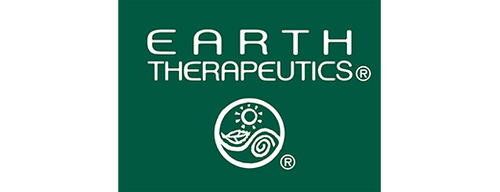Does it seem like the lymphatic system is having a renaissance lately? As more and more people rediscover the age-old practice of lymphatic drainage massage, the physical and health benefits are being shared far and wide.
“I’ve definitely seen results that I’m really happy with,” said one devotee of her new at-home routine, and Vogue called it a “body sculpting massage” that’s “fashion’s best-kept fitness secret.”
“My skin is glowing and I feel lighter – the results speak for themselves…” (Vogue)
The lymphatic system, often ignobly described as the body's sewer, plays a critical role in supporting our immune system. Our cells are constantly producing waste like carbon dioxide, and urea, and our lymphatic system helps to clear away the debris. Much like your municipal sanitation system, we tend to overlook its importance until something goes wrong.
"[The lymphatic system] acts like a sanitation system for our body by getting rid of 'waste' that our body naturally produces, or other things that can invade our body, like bacteria," says Linda Koehler, PhD, an assistant professor of physical therapy and rehabilitation medicine at the University of Minnesota. "It's what protects us from getting an infection." (Women's Health Magazine)
Increased and persistent infections is one sign of a poorly functioning lymphatic system. Additional symptoms of a sluggish lymphatic system include:
-
Unexplained swelling in the lymph nodes, limbs or other body parts
-
Feeling tired or run down
-
Poor digestion
-
Skin Conditions like rashes, eczema, or acne
-
Chronic Pain and inflammation
-
Brain Fog with lack of mental clarity, focus, and memory
-
Headaches
-
Chronic allergies
It's important to note that if you experience any of these symptoms, it's best to consult a medical professional to determine the underlying cause and receive proper treatment.
What exactly is the lymphatic system?

Ever felt like you've been hit by a truck and checked your neck for a golf ball-sized swelling? That's your lymph nodes doing their thing. Think of them as the body's early warning system, sounding the alarm for any potential infection that might be skulking around. Lymph nodes, small bean-shaped glands, are strategically scattered around the body, with major groupings in one of six areas:
-
Cervical lymph nodes in the neck region
-
Axillary lymph nodes in the armpits
-
Inguinal lymph nodes located in the groin area
-
Mesenteric lymph nodes in the abdominal cavity
-
Popliteal lymph nodes behind the knees
Lymph nodes are one part of a powerhouse network of lymph vessels and tissues that work together to remove toxins and waste from the body. Here's how it works: lymph, a clear fluid packed with immune system cells, is transported throughout the body by lymph vessels. As it flows, the lymph nodes filter and process the lymph, catching any unwanted materials like bacteria, viruses, and excess fluids. Once these nasties are flagged, immune system cells attack and eliminate them.
DIY Lymphatic Drainage in 5 minutes flat
While the circulatory system gets a boost from the powerful cardiac muscle, the lymphatic system has a more passive approach. It doesn't have a central pump like the heart, which means it relies on other forces to keep things moving. That's where body movement comes in - each time you stretch, exercise, or even take a deep breath, your muscles contract and create pressure that helps move lymph through the vessels.
Gentle massage is also a great way to show your lymphatic system some love. Gua sha and dry brushing are not just soothing selfcare, they can also help get lymph moving and flowing throughout the body:

Gua sha is an ancient Chinese technique that provides numerous benefits for the entire body, not just the face. This practice involves using a tool to apply gentle pressure along the skin. By promoting circulation and creating subtle pressure, gua sha helps to move lymphatic fluid along to the nodes throughout the body.
-
Read more about the benefits of gua sha for the face
-
Try this simple gua sha massage for your legs:
-
Apply a body oil or lotion to your legs, focusing on the areas where lymph nodes are located, such as behind the knees and in the groin area
-
Hold the gua sha tool at a 45-degree angle and gently scrape your skin with gentle pressure. Start at your ankles and move upward in sweeping motions towards your thighs. Repeat each stroke 3-5 times
-
Focus on areas where you tend to have puffiness or swelling, like your ankles or calves. Use very light pressure and gentle strokes in these areas
-
Pay extra attention to the back of your thighs and glutes, as these areas can also benefit from lymphatic drainage
-
Continue the massage, gradually working your way over your entire legs
-
Finish the massage with a soothing moisturizer or body lotion
-

Dry brushing is another effective way to promote lymphatic drainage that’s super fast and easy to do at home. With a good body brush, massaging the skin in a circular motion helps to stimulate the lymphatic system, reduce swelling and inflammation, and improve immune function.
Dry brushing also helps to exfoliate dead skin cells, resulting in a brighter, smoother, and more radiant complexion. Curious? Gentle Dry Brushing 101 will help get you started.
More ways to boost your lymphatic system:

Regular exercise such as walking, yoga, swimming, these 3 at-home workouts designed especially for stimulating lymphatic drainage. (Well + Good)

Wear loose-fitting clothing. Tight clothing can restrict lymphatic flow, leading to swelling and other health issues. (Lifehack)

Sleep tight and aim for 7-8 quality hours. It’s vital for your overall health, and beneficial for lymphatic function. (Sleepopolis)

Go polar with cold water therapy. Cold water immersion causes your lymph vessels to contract, stimulating your lymphatic system to flush out waste and toxins from your body. (Camille Styles)


